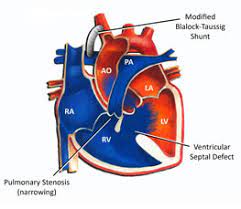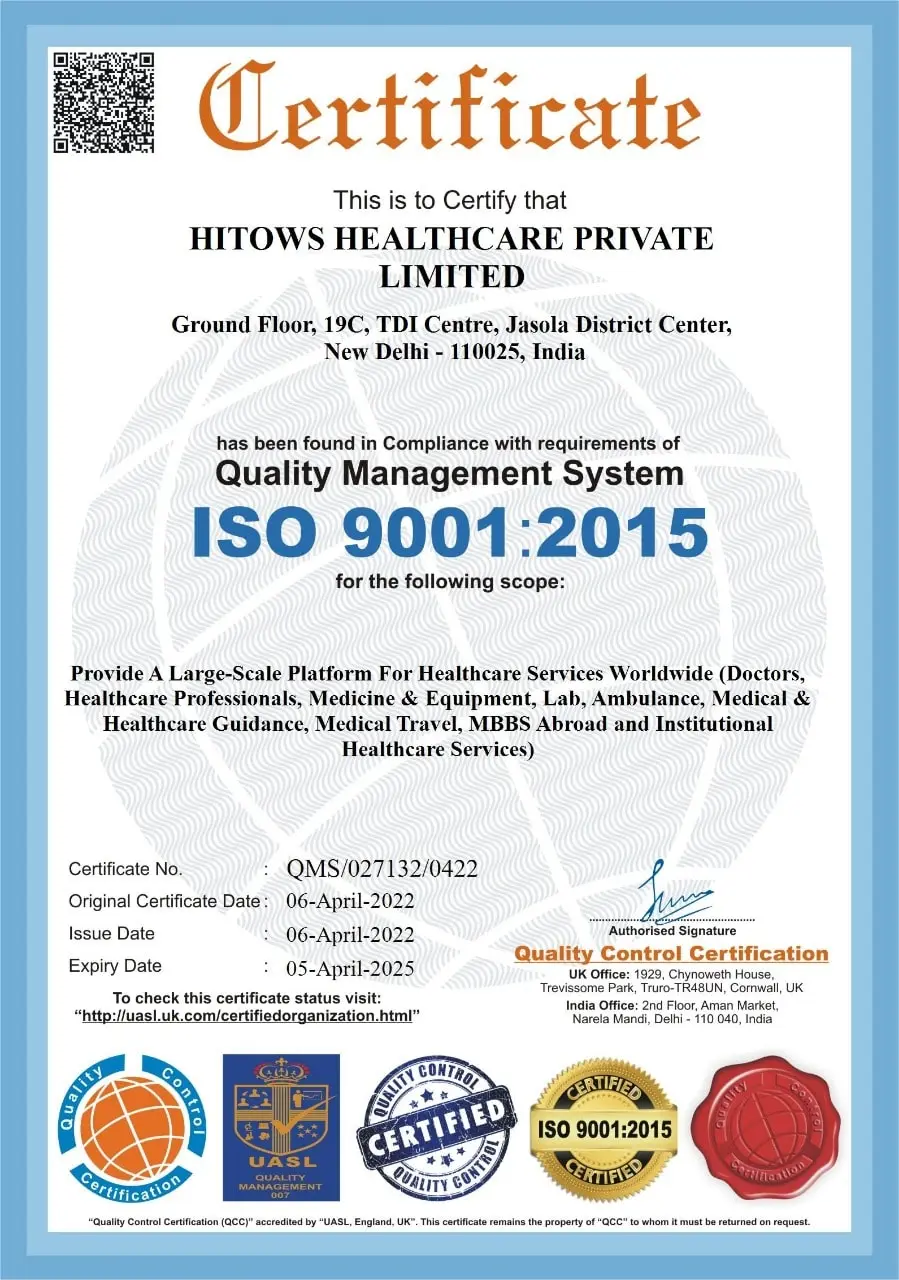BT Shunt Pediatric
India
-
Our Price USD 5985
-
Hospital Price USD 6650
-
You Save : USD 665
Booking Amount: USD 599. Pay Remaining 90% at the hospital.
Book NowAdditional Credit
Among the important extras we offer as part of the Additional Credit are the following:
-
Site Tourism For The Patient & Attendant
-
Airport Pick & Drop Service
-
Ambulance service at airport
-
Priority appointments with The Doctor
-
Cancel Easily Anytime with Full Refund
-
Room Upgradation
-
Free Online Doctor Consultation Valued at USD 20
-
Free hotel Stay for 5 to 7 days Accordingly
-
Welcome Kit at Arrival
-
Interpreter
-
Medical Visa Assistance
What is Included?
- Doctor consultation charges
- Lab tests and diagnostic charges
- Room charges inside hospital during the procedure
- Surgeon Fee
- Cost of implant
- Nursing charges
- Hospital surgery suite charges
- Anesthesia charges
- Routine medicines and routine consumables (bandages, dressings etc.)
- Food and Beverages inside hospital stay for patient and one attendant.
What is not Included?
- Extra Radiology Investigations
- Healthcare Professionals Charges of other consultations.
- Other Requested Services such as Laundry etc.
- Additional Pharmaceutical Products and Medicines After Discharge from Hospital.
- Management of Conditions Unrelated to Procedures or Pre-Existing.
- The cost of any additional implants will be in addition to the package cost.
Package Description
BT Shunt:
Blalock-Taussig shunts, often known as BT shunts, are used to treat abnormalities that impede blood flow from the right ventricle to the lungs through the pulmonary artery. Pulmonary atresia, pulmonary stenosis, and tricuspid atresia are among them.
The BT shunt is a treatment for palliative purposes. It doesn't fix the problem, but it can assist with symptoms until the child is older and/or the problem can be fixed. The surgery is also known as the "blue baby" operation.
A shunt is a tiny tube composed of Gore-Tex, a synthetic material. The BT shunt has a diameter of 3 to 3.5 mm. It creates a detour by connecting a segment of the aorta to the pulmonary artery. This permits enough blood to travel through the lungs, allowing for more oxygen to be taken in. The shunt eliminates any cyanosis or blueness that the youngster was experiencing. It is a closed-heart surgery.
The BT shunt performs the same function as the ductus arteriosus. It is frequently implanted after the ductus normally shuts. Shunts are often utilised for four to five months, or until the kid outgrows them and requires a second surgery or permanent repair.
KEY POINTS:
- Blalock-Taussig (BT) shunts serve to alleviate symptoms of the condition until the kid reaches adulthood or the defect can be fixed.
- The shunt acts as a detour, allowing enough blood to travel past the lungs and absorb more oxygen.
- A closed-heart operation is done to place the shunt.
- Shunts are routinely used for four to five months before permanent repair is necessary.
RISKS:
Shunt obstruction, tube infection, and increased blood flow to the lungs, which can lead to vascular injury or reduced blood supply to the brain and body, are all risks.
Disease Overview:
Pulmonary atresia
Pulmonary atresia is a congenital cardiac abnormality that is usually discovered shortly after birth. The valve that sends blood out of the heart and into your or your baby's lungs (pulmonary valve) does not develop properly in pulmonary atresia.
Blood cannot follow its typical course to gather up oxygen from the lungs without a link from the pumping chamber to the pulmonary artery. Instead, some blood passes through other natural passageways within the heart and its arteries on its way to the lungs.
Disease Signs and Symptoms:
If your infant has pulmonary atresia, symptoms will appear shortly after delivery. The following are some of your baby's indications and symptoms:
- Skin with a blue or grey tone (cyanosis)
- Rapid breathing or shortness of breath
- Easily Tiring or Fatigued
- Feeding issues
Disease Causes:
As with most congenital heart diseases, there is no known cause of pulmonary atresia. The condition is linked with another type of congenital heart defect called a patent ductus arteriosus (PDA). Pulmonary atresia may occur with or without a ventricular septal defect (VSD)
Diagnosis:
The following tests may be used to identify pulmonary atresia:
- Pulse oximetry: This noninvasive test uses a tiny clamp-like device that is put on a finger, earlobe, or toe to monitor oxygen levels in the blood.
- X-ray: It depicts the size and form of your child's interior organs, bones, and tissues. This can assist your baby's doctor in determining the amount of his or her pulmonary atresia.
- Electrocardiogram (ECG): This test uses sensor patches with wires connected (electrodes) to measure your child's heart's electrical impulses. This test looks for aberrant cardiac rhythms (arrhythmias or dysrhythmias) as well as heart muscle tension.
- Echocardiogram: Sound waves generate detailed pictures of your child's heart in an echocardiogram. An echocardiography is often used by your child's doctor to identify pulmonary atresia.
- Cardiac catheterization: This test involves your child's doctor inserting a thin, flexible tube (catheter) into a blood artery in his or her groyne and using X-ray imaging to guide it to his or her heart. This test gives you extensive information on your child's cardiac anatomy, blood pressure, and oxygen levels in the heart, pulmonary artery, and aorta.
- CT scan: A CT scan of the chest reveals the heart's anatomy as well as the location of the pulmonary artery.
Disease Treatment:
Once pulmonary atresia signs appear, your infant will require immediate medical intervention. The type of surgery or operation your kid has is determined by the severity of his or her disease
Once pulmonary atresia signs appear, your infant will require immediate medical intervention. The type of surgery or operation your kid has is determined by the severity of his or her disease
Medications:
Prostaglandin, an injectable medication, prevents the natural link (ductus arteriosus) between the pulmonary artery and the aorta from closing. This isn't a long-term solution, but it provides your physicians more time to figure out what kind of surgery or operation is ideal for your child.
Catheterization procedures:
In certain situations, repairs can be done using a long, thin tube (catheter) put into a major vein in your baby's groyne and threaded up to the heart.
These procedures include:
- Balloon atrial septostomy.
- Stent placement
Heart surgery:
- BT Shunt
- Fontan procedure
- Glenn procedure
- Heart transplant
Prostaglandin, an injectable medication, prevents the natural link (ductus arteriosus) between the pulmonary artery and the aorta from closing. This isn't a long-term solution, but it provides your physicians more time to figure out what kind of surgery or operation is ideal for your child.
Catheterization procedures:
In certain situations, repairs can be done using a long, thin tube (catheter) put into a major vein in your baby's groyne and threaded up to the heart.
These procedures include:
- Balloon atrial septostomy.
- Stent placement
Heart surgery:
- BT Shunt
- Fontan procedure
- Glenn procedure
- Heart transplant
Information related to Treatment
Package Details
Days in Hospital
10 Days
Days in Hotel
*
14 Days
Room Type
Private
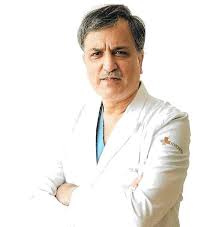
Treating Doctor
Dr. Anil Bhan
Cardiac Surgeon- Pediatric Cardiology, Pediatric Cardiac Surgeon
Medanta-The Medicity, Gurgaon Gurgaon, India
37 Years of Experience
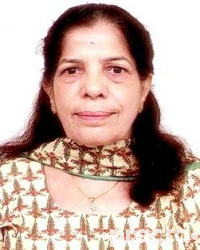
Treating Doctor
Dr. Shanti Talwar
Pediatric surgeon- Pacemaker Implantation, Coronary Angioplasty, Bypass Surgery, Intra - Arterial Thrombolysis Procedures, Mitral/Heart Valve Replacement, Congenital Disorders, Radial Approach Angiography, Cardiac pacing, Appencicitis Treatment, Balloon Mitral Valbuloplasty
Indraprastha Apollo Hospitals, New Delhi New Delhi, India
59 Years of Experience
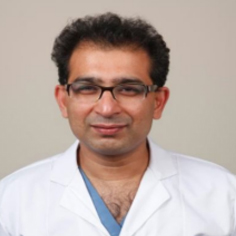
Treating Doctor
Dr. Viresh Mahajan
Paediatric Cardiology- Heart transplant, Angioplasty, GERD Surgery, Kidney Transplant, Pulmonary Arterial Hypertension, Kidney Stone Treatment, Bidirectional Glenn, Fontan procedure & Ebstein anomaly, Arterial switch operation, ASD VSD repair, Transposition of the Great Arteries (TGA) Surgery, Double Inlet Left Ventricle (DILV) Treatment, Double Outlet Right Ventricle (DORV) Surgery, Device implantation for heart failure treatment, Hypertrophic cardiomyopathy treatment, Surgery of ear for alleviation of deafness, Endoscopic Metal Stent Placement, Fitsula treatment, Coarctation, Brain Surgery and Brain Aneursym Surgery, Spasticity, Hip Arthroscopy, Pediatric Lung Transplant
Sarvodaya Hospital Faridabad, India
25 Years of Experience
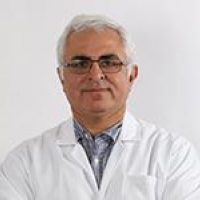
Treating Doctor
Dr. Hemant Madan (Prof)
Cardiologist- Adult & Paediatric- Pediatric Cardiology, Complex coronary interventions, peripheral interventions, Device implantation for rhythm disorders, Valve stenosis, Complex coronary and adult interventions, Paediatric interventions, Advanced pacing and device management, Paediatric and fetal echocardiography
Narayana Super Speciality hospitals Gurgaon, India
18 Years of Experience
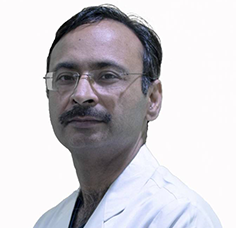
Treating Doctor
Dr. Sushil Azad
Paediatric Cardiology- Tetralogy of Fallot repair, Truncus arteriosus repair, Congenital Heart Disorder CHD, Arteriovenous Malformations, Congenital Limb Defects Surgery, Congestive Heart Failure (CHF) Treatment, Congenital Pseudarthrosis of the Tibia (CPT) Surgery, Cloacal Malformation Surgery, Pulmonary Atresia Surgery, Single Ventricle Defects Surgery, Transposition of the Great Arteries (TGA) Surgery, Connection Repair Arterial Switch, Double Inlet Left Ventricle (DILV) Treatment
Fortis Escorts Heart Institute New Delhi, India
17 Years of Experience
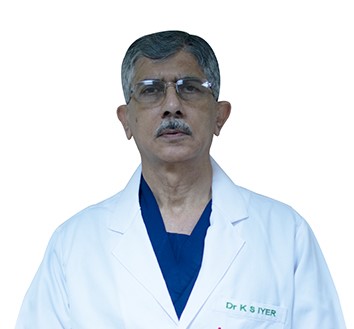
Treating Doctor
Dr. Krishna S. Iyer
Paediatric Cardiac Surgeon- Congenital heart surgery, paediatric Cardiologist, Neonatal heart surgery
Fortis Escorts Heart Institute New Delhi, India
30 Years of Experience
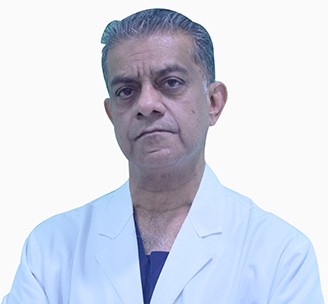
Treating Doctor
Dr. S. Radha Krishnan
Interventional Cardiologist- Pacemaker Implantation, Transcatheter Aortic Valve Implantation (TAVI), Coronary Angiography, Cardiac Ablation, Cardiac Catheterisation, Aortic Anuerysm Surgery/ Endovascular Repair, Cardioversion, Carotid Angioplasty And Stenting, Implantable Cardioverter-Defibrillators (ICDS), Pacemaker Implantation, Peripheral Angioplasty, PCI, TMT, TOF, PDA, DGTA, Pacemaker Implantation, Cardiac Catheterisation, Carotid Angioplasty And Stenting, Pacemaker Implantation, Peripheral Angioplasty, Cardiac Ablation, Cardioversion, Pacemaker Implantation, Cardiac Catheterisation
Fortis Escorts Heart Institute New Delhi, India
40 Years of Experience
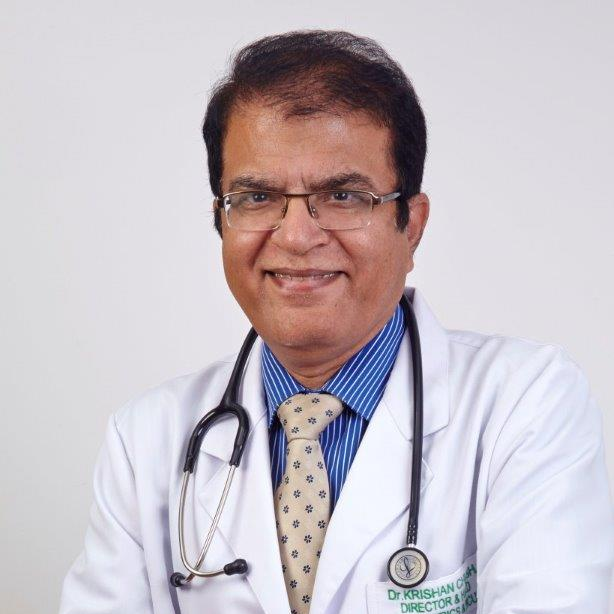
Treating Doctor
Dr. Krishan Chugh
Pediatrician- Pediatric Pulmonology, Allergy Specialist, Bronchoscopy, Bronchoscopy, Bronchoscopy, Pediatric Neonatalogy, Bronchoscopy, Bronchoscopy
Fortis Memorial Research Institute Gurgaon, India
39 Years of Experience
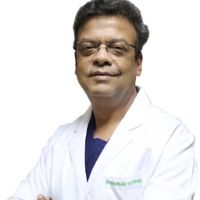
Treating Doctor
Dr. Gaurav Kumar
Paediatric Cardiothoracic Surgeon- Arterial switch operation, Double switch operation, Total anomalous pulmonary venous connection, Arch repair, ASD VSD repair, Tetralogy of Fallot repair, Truncus arteriosus repair, Rastelli operation & Cone repair and cardiac transplant
Narayana Super Speciality hospitals Gurgaon, India
21 Years of Experience
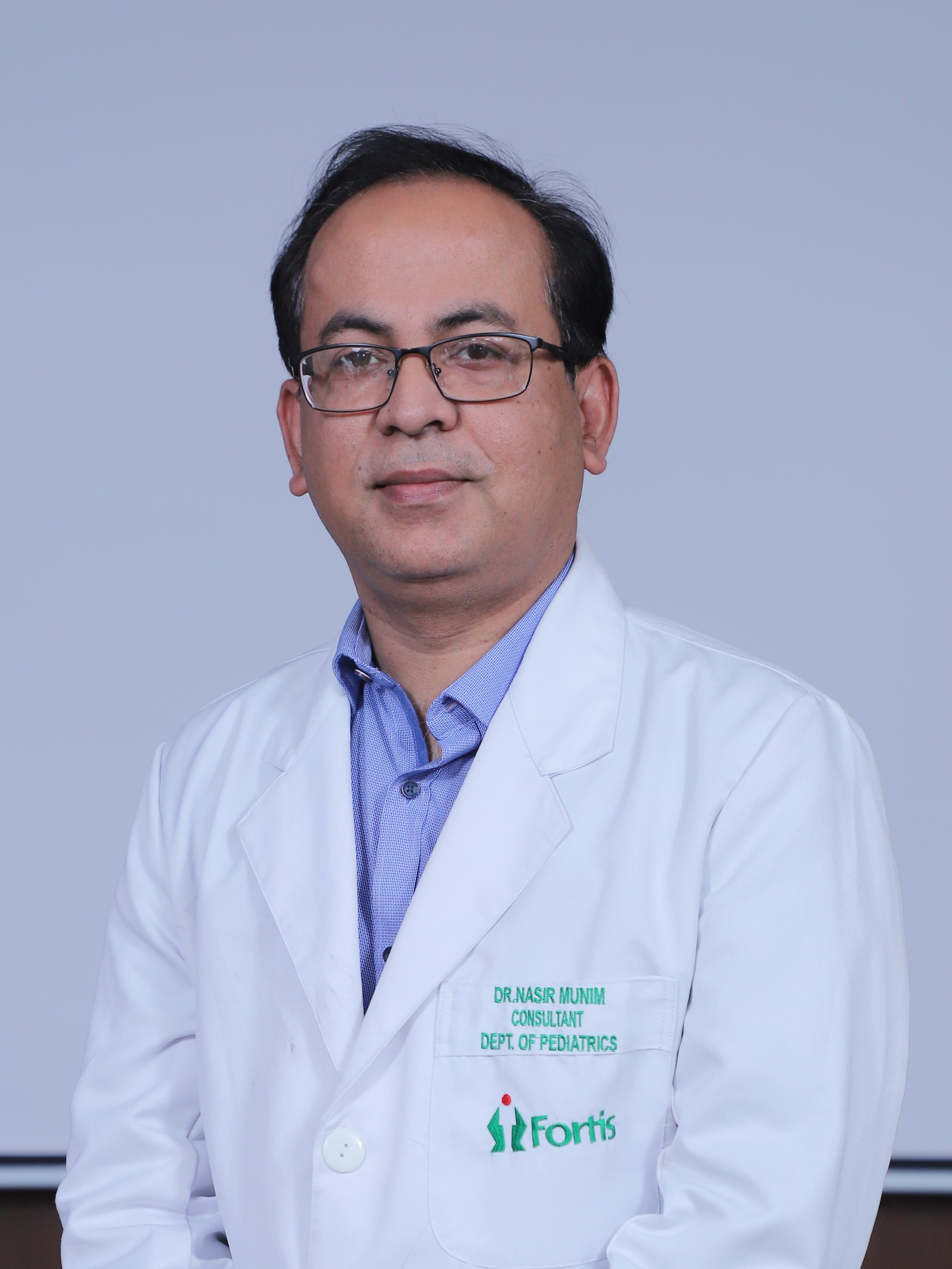
Treating Doctor
Dr. Nasir Munim
Pediatrician- Pediatric Critical Care Medicine, Allergy Testing, Infant & Child nutrition, Allergy Testing, Atrial Septal Defects (ASDS), Thyroid disorder, Vaccination/ Immunization, Chickenpox Treatment, Asthma, Jaundice Treatment, Asthma, Cerebral Palsy, Vaccination/ Immunization, Infant & Child nutrition, Chickenpox Treatment, Chickenpox Treatment, Allergy Testing, Infant & Child nutrition, Bedwetting treatment and management, Polio, Infant & Child nutrition, Child Care, Lactation problems, Management of Restless Child Disorder, Child and Adolescent Problems, Chickenpox Treatment, Cerebral Palsy, Neurofibromatosis, Treatment of Sids, Cough in Children, Management of Growth Retardation, Multiple System Atrophy, Jaundice Treatment, Child and Adolescent Problems, Asthma, Allergy Testing
Fortis Hospital Noida Noida, India
20 Years of Experience

